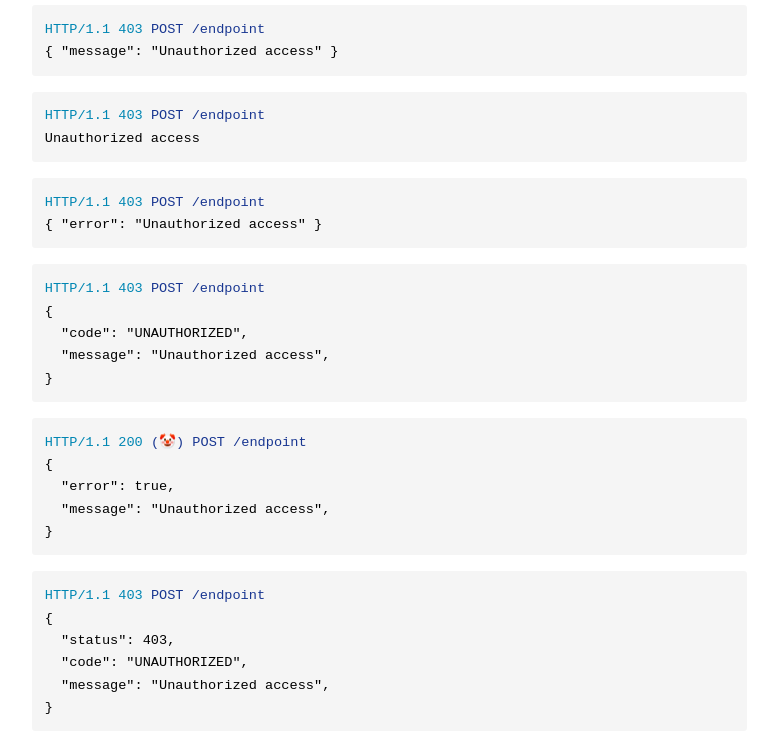this post was submitted on 30 Aug 2024
128 points (99.2% liked)
Programming
22335 readers
223 users here now
Welcome to the main community in programming.dev! Feel free to post anything relating to programming here!
Cross posting is strongly encouraged in the instance. If you feel your post or another person's post makes sense in another community cross post into it.
Hope you enjoy the instance!
Rules
Rules
- Follow the programming.dev instance rules
- Keep content related to programming in some way
- If you're posting long videos try to add in some form of tldr for those who don't want to watch videos
Wormhole
Follow the wormhole through a path of communities !webdev@programming.dev
founded 2 years ago
MODERATORS
you are viewing a single comment's thread
view the rest of the comments
view the rest of the comments


Have a code, where you can really describe the error; try to use the correct HTTP status (your example doesn't); don't ever use status 200 for errors; and finally, have an "error" key set to something somewhere (I'd write the error code to it).
The message is optional.
So, the simplest version would be:
Status 200 for errors is common for non-REST HTTP APIs. An application error isn't an HTTP error, the request and response were both handled successfully.